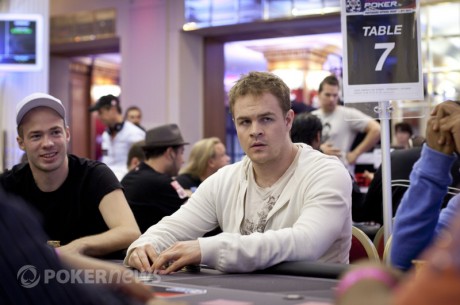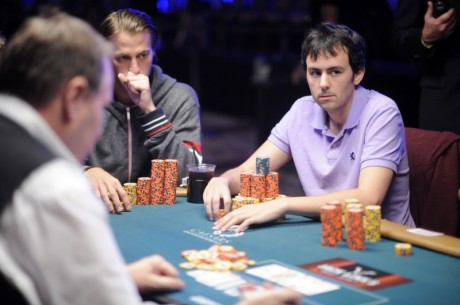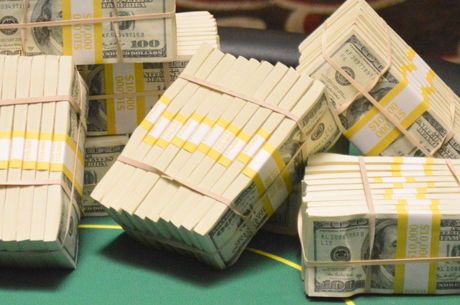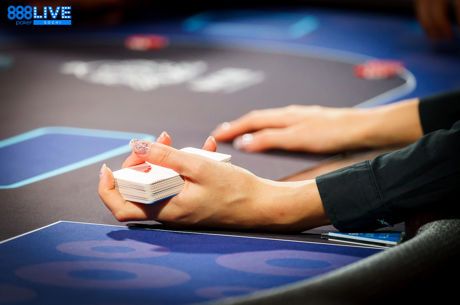Strategy Vault: Playing a Small Top Pair with Lex Veldhuis
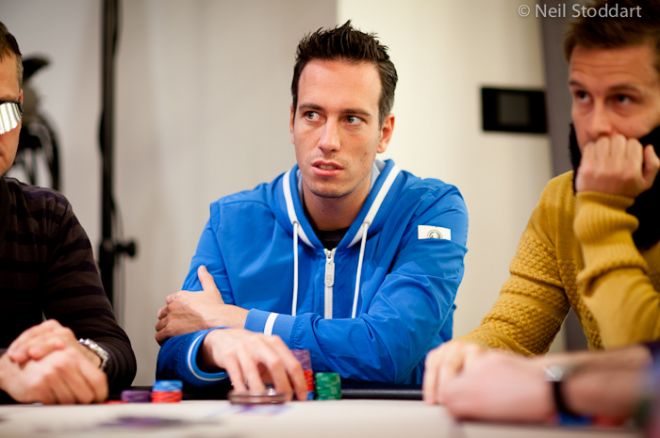
Digging deep into the PokerNews strategy archives can lead to a buried treasure, so we've unearthed a few gems for your viewing pleasure. In this first edition of the Strategy Vault series, Team PokerStars Pro Lex Veldhuis discusses a hand he played in a video that was made for the old PokerNews Strategy site. Veldhuis explains an important concept in low-stakes no-limit hold'em games: with playing a small top pair.
The hand in question came during a $1/$2 no-limit Hold'em heads-up match against online opponent "BR_Manage074." Veldhuis recaps the hand with his analysis below.
"Previous to this hand, I've been in some hands with the villain and developed some quick, specific reads. He likes to call us very light, he knows we're recording a video, and he knows I can play like a monkey. I took advantage of all of this by value-betting thin on a couple hands and not giving up some other marginal holdings when he did the betting. Right now, we're effectively (the smallest stack of the players involved) 140 big blinds deep. Again, I have just said I am going to "value-town" marginal hands as much as I can.
One of the hands that comes up is me holding the K♥7♥ out of position. Villain makes a standard opening (three times the big blind) to $6, I call, and the flop comes 7♦5♠2♣. I flop top pair, second-nut kicker — a hand I really want to go to war with against him. I check, and he checks behind.
The turn was a pretty good card for me, the 3♠. I bet out $10 here to get some value for my hand. I'm assuming I have the best hand here unless he turned a straight with Ax4x. I am even discarding 6x4x as an option, because he would have bet the flop with that. He could also have a funky two pair, but I'm not jumping to conclusions just yet. This is where it gets interesting.
He raises us to $35. This highlights an important concepts in heads-up no-limit Hold'em: People check behind with hands that they don't want to get check-raised with on the flop, but hands that have showdown value. You could think of a very weak 7x or a 5x in this case, possibly with a 6x or 4x kicker, as otherwise he would not have inflated the pot on the turn. Basically, the plan of checking behind on the flop and raising the turn with, for instance, a weak 7x, is to have me put more money in with a spade draw, a naked four, or a pair and a straight draw. He gains initiative in the hand by raising me on the turn here. This will most likely mean I'm going to check most rivers to him, giving him the option to check behind and have a showdown. In that case, he is basically pot-controlling the river by raising the turn, plus I have to pay more to hit draws.
This is a very lucrative play with top pairs, especially if you think your opponent will lead on most turns. You practically gain a bet in profit if he doesn't have anything, too. You also will get paid off more by weaker hands, because from their perspective it doesn't add up. If you didn't hit the flop, why would you raise the turn? People will think you're bluffing a lot.
Knowing all of this, I can reverse this concept and put myself in the situation of the position described above. The stacks are bit too deep to shove here to basically fake a semi-bluff. Don't forget that this is a strong spot to three-bet on the turn; calling is not the only option. The only problem is, in this spot I don't think to gain a lot of value from weaker hands that I have crushed. If I three-bet here, there is a big chance he might fold a weaker 7x. Also, if the board bricks on the river, I can fake a bluff, pretending I missed my draw, and get paid off light. Therefore, seeing that he was kind of a loose cannon so far, I decided to slow-play my hand a bit.
The river was the Q♣, and I check with the plan to call a bet, but he checks behind. As soon as he checks behind, I was amazed to see him turn over the Q♥4♥ for top pair. I definitely would have expected him to value-bet this hand — I know that I definitely would have [value-bet] in his situation. It's funny to see he did the same thing as described before, but in reverse. He wasn't the one raising to get more value from a draw or making a bluff-lead fold; he was the one drawing. I'm happy I played the hand this way with these stacks.
Keep in mind, if we had been playing $200 stacks, I would have gotten the money in on the turn, to counter his semi-bluff or check-behind option on a later street. This hand is a huge example for a lot of key turn plays these days. Pay attention and use them to your advantage to either get more value from a showdown hand when you're in position, or to play hands out of position as in this example. You can make your bet on the turn seem even stronger if you three-bet his turn raise, or slow-play a pair and represent a draw. You don't always have to give the bettor to have the initiative."
This article was originally published on Oct. 15, 2008.
Veldhuis is a member of Team PokerStars Pro, and you can play with him online at PokerStars by downloading the software and getting started today.
To stay on top of the poker world, follow us on Twitter and like us on Facebook.

